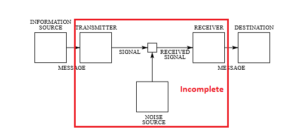
Oral, written and electronic history of Shannon
There are good reasons for a certain lack of knowledge and criticism, often unfair, to Claude Shannon.
There is a rare interview in July 1982 by Robert Price, curiously called “Oral-History” in which he states:
“Well, back in ’42…computers were just emerging, so to speak. They had things like the ENIAC down at University of Pennsylvania…Now they were slow, they were very cumbersome and huge and all, there were computers that would fill a couple rooms this size and they would have about the ability of one of the little calculators that you can buy now for $10. But nevertheless we could see the potential of this, the thing that happened here if things ever got cheaper and we could ever make the up- time better, sort of keep the machines working for more than ten minutes, things like that. It was really very exciting.
We had dreams, Turing and I used to talk about the possibility of simulating entirely the human brain, could we really get a computer which would be the equivalent of the human brain or even a lot better? And it seemed easier then than it does now maybe. We both thought that this should be possible in not very long, in ten or 15 years. Such was not the case, it hasn’t been done in thirty years.”
The written work of Claude Shannon is well known, it is in his main work Mathematical Theory of Communication, which begins with an article with the same name published in the magazine of Bell Laboratories in 1948, and that has a revised version and corrected in the site of the Department of Mathematics, Harvard.
Finally, the great contribution of Shannon, besides that its presented diagram is always incomplete because they take from him the source of information and the destination of the information, and this makes the information “without signification” and without sense.
But his great contribution is in fact the information in the artifact, what are the limits of “noise” (not only this) but he himself states in his work that he will deal with information in a strict sense, that is, in the artifact









